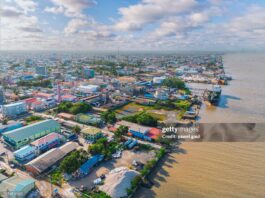
By David Jessop
News Americas, LONDON, England, Fri. Sept. 11, 2015: The challenge now facing almost every Caribbean tourism destination is how to diversify their source of visitors as international and inter-regional competition becomes more intense; not least because later this year US citizens may on an individual basis be freer to travel to Cuba.
Finding new sources of visitor supply is, however, not as easy as it sounds. The issue is particularly complicated in completely new markets as it requires airlift and accompanying arrangements that usually involve some form of financial incentive, particularly if it involves a scheduled air service. Establishing new markets also requires a relatively long lead time.
Tour operators have to negotiate commercial arrangements with carriers and domestic suppliers, and agree with properties and destinations marketing arrangements and funding for promotional activities.
So important have growing markets become that bodies like the Jamaica Tourist Board now organize local events — this year the Jamaica Product Exchange (JAPEX) has a special focus on attracting buyers and industry professionals from the markets of the Caribbean, Latin America and Eastern Europe — and are participating in international trade shows in locations much further afield such as China, in order to develop relationships that may eventually result in new sources of visitors.
A further way forward much discussed within the region is the development of niche marketing opportunities in established markets in North America and Europe. This has resulted in Caribbean destinations identifying an increasingly diverse range of opportunities from faith-based tourism to sporting events, entertainment in the form of music festivals, to what remains socially contentious in most Caribbean nations, the encouragement of high-spending visitors in the lesbian, gay, bisexual and transgender (LGBT) market.
It is also widely accepted that much more needs to be done to encourage inter-regional tourism. This has declined in recent years as a result of poor and expensive air connections, visa requirements by some countries, and low volumes, making package vacations expensive and unattractive for many Caribbean people who on inter-regional visits tend to stay for periods of no more than 3-4 days.
But beyond such commercial and logistical problems, there are other dimensions that are all too easily ignored in the quest for growth in new markets.
Earlier this year a paper published by Cristina Jönsson, a tourism lecturer at the University of the West Indies’ (UWI) Cave Hill Campus, and a UWI management studies graduate, Nicola Harrison, looked at what Brazilian visitors expect from a vacation and related this to what Barbados actually offered. The research — which ought to be read by all industry professionals and is available on request via the link below — was striking.
In brief, it found that not enough notice was being taken of visitor motivation when targeting new markets.
The researchers interviewed Brazilians visiting Barbados, spoke with representatives of the Brazilian embassy, and compared their views with what tour operators and others in the private and public sector were able to offer on the island. What they discovered was that the facilities that Brazilians most wanted in a vacation were missing or could be better supplied at home. They wanted loud
beach life, spontaneity, adventure, parties and nightlife. Like many Latin people, they were used to eating very late, and partying through the night. Brazilian visitors also indicated they were disappointed with the lack of quality shopping, the absence of local craft items, and experienced language difficulties because few people spoke Portuguese.
Whether such research has also been undertaken on what visitors from Russia, China or let us say the Gulf States also want is unclear; but from listening to presentations at international industry gatherings it is clear that what many visitors from these countries require is also unlikely to be met in most of the region, which remains geared to providing offerings most likely to appeal to visitors from North America and Europe.
There is of course nothing wrong with this if growth and diversification can be achieved through identifying new niches or moving the product up-scale; nor is it meant to be critical of the remarkable success in diversifying source markets that Jamaica and some other Caribbean destinations like Curacao, Aruba, the Dominican Republic and Cuba have achieved.
Rather it is to note that a much closer focus on visitor motivation and needs will in future be required, particularly by smaller destinations in the Anglophone Caribbean, when looking at new markets and how best to address growing competition.
The paper, ‘Targeting a New Tourism Market: Is Brazil ready for the Brazilian Market?’, can be accessed via the following link: https://www.academia.edu/10462580/Targeting_a_New_Tourism_Market_Is_Barbados_Ready_for_the_Brazilian_Market
David Jessop is a consultant to the Caribbean Council and can be contacted at [email protected]. Previous columns can be found at www.caribbean-council.org.






